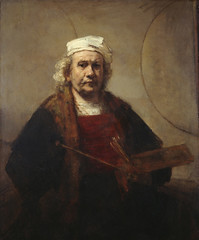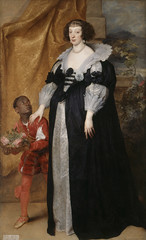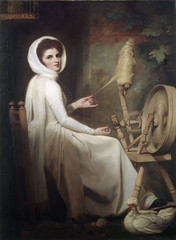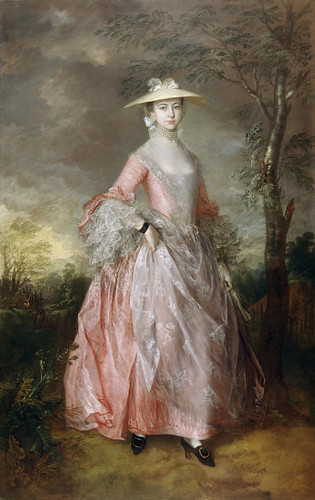
Thomas Gainsborough. Mary, Countess Howe, ca. 1764. Oil on canvas. 95 x 61 in. Kenwood House, English Heritage; Iveagh Bequest (88029039). Photo courtesy American Federation of Arts.
Rembrandt, Van Dyck, Gainsborough: The Treasures of Kenwood House, London October 12, 2012–January 13, 2013 Milwaukee Art Museum
Portraiture, landscape, and seventeenth-century Dutch and Flemish works dominated English aristocratic collections in the late nineteenth century, when Edward Cecil Guinness, 1st Earl of Iveagh (1847–1927) and heir to the world’s most successful brewery, shared the cultural stage and art market with other industry titans such as the Rothschilds, J. Pierpont Morgan, and Henry Clay Frick. The forty-eight masterpieces in this exhibition are mostly drawn from Lord Iveagh’s collection and represent the greatest artists of their periods, including Rembrandt van Rijn (Dutch, 1606–1669), Anthony van Dyck (Flemish, 1599–1641), Thomas Gainsborough (English, 1727–1788), Sir Joshua Reynolds (British,1723–1792), Frans Hals (Dutch, ca. 1581–1666), and J. M. W. Turner (English, 1775–1851).
The Iveagh Bequest, as the collection has been called since the earl donated his collection to the State, has been housed at Kenwood House, a neoclassical villa in London. With Kenwood under renovation, this collection is traveling outside of the United Kingdom for the first time, and the Milwaukee Art Museum is one of only four venues in the U.S. In addition to the masterworks from the Iveagh Bequest, the exhibition includes several works acquired specifically for Kenwood.
A highlight of the exhibition is Rembrandt’s sublime Portrait of the Artist (ca. 1665), one of the artist’s last self-portraits and one of only a few of his many self-portraits that show him in the act of painting. The picture suggests Rembrandt’s confidence in his reputation as an artist despite the troubles in his personal life, including bankruptcy. Among the several fine Gainsboroughs in the exhibition is the sumptuous full-length portrait Mary, Countess Howe (ca. 1764). This image of aristocratic elegance set against the natural English countryside is regarded as a masterpiece of English painting, and amazingly is only the third full-length portrait Gainsborough ever painted. Such portraits were very popular during this period, owing to a great admiration for the aristocratic portraits of the seventeenth-century artist Anthony van Dyck, who was royal painter to Charles I of England. The exhibition features two portraits by Van Dyck, including the impressive Princess Henrietta of Lorraine Attended by a Page (ca. 1634).
In addition to collecting portraits of lovely ladies, Lord Iveagh was, as a father, drawn to paintings of children. These portraits often served as reminders of the fleeting innocence of youth. One of the masterpieces of this genre is Miss Murray (1824–26) by Thomas Lawrence, depicting a charming three-year-old girl gathering flowers in the lap of her dress.

